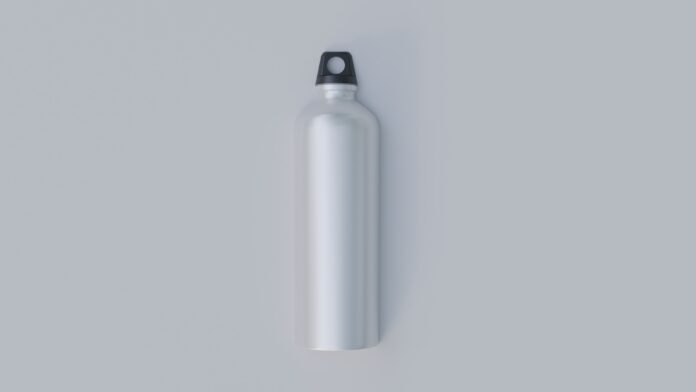Vacuum technology is a specialized field that deals with the manipulation and control of vacuum environments. It encompasses various techniques, equipment, and applications used in industries such as electronics, semiconductor manufacturing, aerospace, research laboratories, and more. Vacuum technology plays a crucial role in many scientific and industrial processes, enabling the production of advanced materials, the study of physical phenomena, and the development of cutting-edge technologies. In this comprehensive guide, we will explore the key aspects of vacuum technology, its principles, applications, and the essential things you need to know.
1. Definition and Principles: Vacuum technology is the science and technology of creating, maintaining, and controlling low-pressure environments, known as vacuums. A vacuum is an absence of matter, specifically gases and particles, in a given space. The fundamental principle is to remove gas molecules from a system, resulting in a pressure lower than atmospheric pressure.
2. Types of Vacuum: Vacuums are categorized into several pressure ranges, each with distinct characteristics and applications. The most common types include atmospheric pressure (1 atm), low vacuum (1 atm to 10-3 atm), medium vacuum (10-3 atm to 10-6 atm), high vacuum (10-6 atm to 10-9 atm), ultra-high vacuum (10-9 atm to 10-12 atm), and extreme-high vacuum (below 10-12 atm).
3. Vacuum Pumps: Vacuum pumps are devices used to create and maintain vacuums by removing gases and creating a pressure differential. Different types of pumps are employed based on the required vacuum level. Some commonly used pumps include rotary vane pumps, diffusion pumps, turbomolecular pumps, cryogenic pumps, and ion pumps.
4. Pressure Measurement: Accurate pressure measurement is vital in vacuum technology. Various instruments and gauges are used to measure vacuum levels, including mechanical gauges, ionization gauges, capacitance manometers, Pirani gauges, and residual gas analyzers.
5. Vacuum Components: A range of specialized components is used in vacuum systems to facilitate different processes. These include vacuum chambers, valves, flanges, fittings, feedthroughs, seals, o-rings, and traps. Each component is designed to maintain the integrity of the vacuum and enable various operations.
6. Leak Detection: Leakage is a common issue in vacuum systems and can compromise their performance. Leak detection methods, such as helium leak detectors, mass spectrometry, and bubble tests, are used to identify and locate leaks in vacuum systems.
7. Thin Film Deposition: Vacuum technology is extensively used in thin film deposition processes, where a thin layer of material is deposited onto a substrate. Techniques such as physical vapor deposition (PVD), chemical vapor deposition (CVD), sputtering, and evaporation are employed to create coatings with specific properties for applications in electronics, optics, and surface engineering.
8. Vacuum Furnaces: Vacuum furnaces are used for heat treatment processes in an oxygen-free environment. They enable controlled heating, cooling, and annealing of materials, ensuring precise temperature control and reducing oxidation or contamination.
9. Particle Accelerators: In the field of particle physics, vacuum technology is crucial for the operation of particle accelerators. Ultra-high vacuum levels are necessary to minimize interactions between accelerated particles and gas molecules, ensuring accurate particle trajectories and collision data.
10. Space Simulation: Vacuum chambers and associated technologies are used to simulate the vacuum conditions of space. These chambers help test the performance and durability of spacecraft components, satellite systems, and astronaut equipment in extreme low-pressure environments.
These ten points provide a brief overview of vacuum technology, highlighting its significance and applications. From creating vacuums to pressure measurement, vacuum pumps to leak detection, thin film deposition to space simulation, each aspect plays a crucial role in various industries and scientific Vacuum technology is a specialized field that deals with the manipulation and control of vacuum environments. It encompasses various techniques, equipment, and applications used in industries such as electronics, semiconductor manufacturing, aerospace, research laboratories, and more. Vacuum technology plays a crucial role in many scientific and industrial processes, enabling the production of advanced materials, the study of physical phenomena, and the development of cutting-edge technologies.
Vacuum technology revolves around the creation and maintenance of low-pressure environments, known as vacuums. A vacuum is an absence of matter, specifically gases and particles, in a given space. The fundamental principle is to remove gas molecules from a system, resulting in a pressure lower than atmospheric pressure. There are different types of vacuums categorized based on pressure ranges. These include atmospheric pressure, low vacuum, medium vacuum, high vacuum, ultra-high vacuum, and extreme-high vacuum.
Vacuum pumps are crucial devices in vacuum technology as they are responsible for creating and maintaining vacuums. These pumps remove gases from a system, creating a pressure differential. The choice of vacuum pump depends on the required vacuum level. Common types of pumps used include rotary vane pumps, diffusion pumps, turbomolecular pumps, cryogenic pumps, and ion pumps.
Accurate pressure measurement is vital in vacuum technology. Various instruments and gauges are used to measure vacuum levels, allowing precise control and monitoring. Mechanical gauges, ionization gauges, capacitance manometers, Pirani gauges, and residual gas analyzers are some examples of pressure measurement devices used in vacuum systems.
Vacuum systems comprise specialized components that facilitate various processes. Vacuum chambers provide the enclosed space for creating and maintaining the vacuum. Valves control the flow of gases in and out of the system. Flanges, fittings, and seals ensure proper connections and maintain the integrity of the vacuum. Feedthroughs enable the passage of electrical or mechanical components without compromising the vacuum. O-rings and gaskets provide effective seals, while traps remove or collect unwanted gases and contaminants.
Leakage is a common challenge in vacuum systems that can compromise their performance. Leak detection methods are employed to identify and locate leaks. Helium leak detectors, mass spectrometry, and bubble tests are commonly used techniques to detect and quantify leaks in vacuum systems, ensuring their integrity and efficiency.
Vacuum technology finds extensive application in thin film deposition processes. Thin films are layers of material deposited onto a substrate for various purposes. Physical vapor deposition (PVD), chemical vapor deposition (CVD), sputtering, and evaporation are some of the techniques used to create thin films. These processes are vital in industries such as electronics, optics, and surface engineering, enabling the production of coatings with specific properties.
Vacuum furnaces are another important aspect of vacuum technology. These furnaces are used for heat treatment processes in an oxygen-free environment. By eliminating the presence of oxygen, vacuum furnaces enable controlled heating, cooling, and annealing of materials, ensuring precise temperature control and reducing oxidation or contamination.
In the field of particle physics, vacuum technology is essential for the operation of particle accelerators. Particle accelerators require ultra-high vacuum levels to minimize interactions between accelerated particles and gas molecules. Maintaining a high vacuum ensures accurate particle trajectories and collision data, facilitating groundbreaking research in the field of particle physics.
Vacuum chambers and associated technologies are used to simulate the vacuum conditions of space. These chambers create a low-pressure environment similar to space, allowing the testing of spacecraft components, satellite systems, and astronaut equipment in extreme conditions. Space simulation in vacuum chambers helps evaluate the performance and durability of these systems, ensuring their reliability in the harshness of space.
In summary, vacuum technology encompasses various techniques, equipment, and applications for creating, maintaining, and manipulating low-pressure environments. From pressure measurement to vacuum pumps, from thin film deposition to space simulation, each aspect of vacuum technology plays a crucial role in diverse industries and scientific endeavors.
Vacuum technology has profound implications in the field of electronics and semiconductor manufacturing. The production of microchips and electronic devices requires precise control over the deposition of thin films and the removal of contaminants. Vacuum technology enables the fabrication of high-quality integrated circuits, ensuring optimal performance and reliability of electronic devices.
In research laboratories, vacuum technology facilitates the study of physical phenomena under controlled conditions. By eliminating the interference of gases, scientists can explore the behavior of materials, gases, and particles at extremely low pressures. Vacuum chambers and associated equipment are utilized in experiments related to surface science, material characterization, atomic physics, and other scientific disciplines.
Space exploration heavily relies on vacuum technology for the development and testing of spacecraft and satellite systems. The vacuum conditions of space pose unique challenges that need to be addressed during the design and construction of space vehicles. Vacuum chambers simulate these extreme conditions, allowing engineers to evaluate the performance, durability, and safety of space-bound systems.
Vacuum technology is also indispensable in the field of optics and photonics. High-quality optical coatings, such as anti-reflective coatings and mirrors, are manufactured using vacuum deposition techniques. These coatings enhance the efficiency and precision of optical devices, including lenses, telescopes, and lasers. Vacuum technology enables the production of optical components with exceptional performance and minimal losses.
The medical and pharmaceutical industries benefit from vacuum technology in various applications. Vacuum pumps are used in vacuum-assisted wound closure systems, where negative pressure promotes wound healing. In pharmaceutical production, vacuum technology is utilized for the drying and preservation of sensitive substances, such as vaccines and medications, preventing degradation and ensuring product stability.
Vacuum technology has significant implications in energy-related fields as well. It plays a vital role in the production of solar panels, where thin film deposition techniques are employed to create efficient photovoltaic cells. Vacuum insulation panels are used to minimize heat transfer in buildings, improving energy efficiency and reducing heating and cooling costs.
The aerospace industry relies on vacuum technology for the testing and qualification of components and systems. Vacuum chambers enable the simulation of high-altitude conditions, extreme temperature variations, and the absence of atmospheric pressure, ensuring the reliability and safety of aerospace equipment.
In the field of nanotechnology, vacuum technology is essential for the fabrication and manipulation of nanostructures. Techniques such as electron beam lithography and molecular beam epitaxy require ultrahigh vacuum conditions to achieve precise control over the arrangement and growth of nanoscale materials and devices.
Vacuum technology also finds applications in the field of analytical instrumentation. Mass spectrometers, electron microscopes, and surface analysis tools operate under vacuum conditions to achieve accurate and reliable measurements. The absence of gases enables the detection and characterization of samples with high sensitivity and resolution.
These examples highlight the broad range of applications and significance of vacuum technology in various industries and scientific disciplines. By harnessing the principles of vacuum and utilizing specialized equipment and techniques, researchers, engineers, and manufacturers continue to advance technology, push boundaries, and uncover new possibilities in numerous fields.
In conclusion, vacuum technology is a vital and multidisciplinary field that revolves around the creation, control, and manipulation of low-pressure environments. It encompasses a wide range of techniques, equipment, and applications that contribute to the advancement of science, industry, and technology. From pressure measurement to vacuum pumps, thin film deposition to space simulation, vacuum technology enables the production of advanced materials, exploration of physical phenomena, and development of cutting-edge technologies that shape our modern world.














